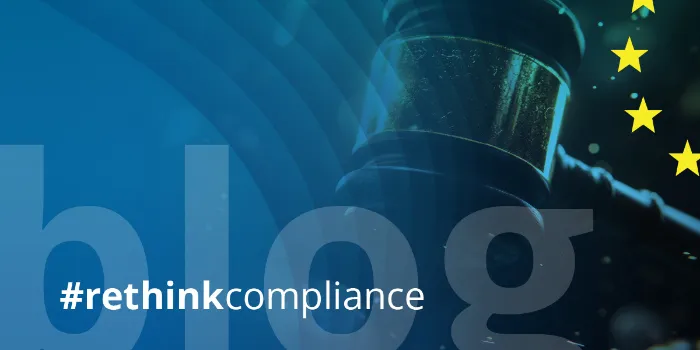

FIU Annual Report 2020 – Trade-Based Money Laundering Vulnerability (Part 2)
#rethinkcompliance Blog | Post from 04.10.2021
In its recently published Annual Report 2020, the German FIU also addressed the issue of Trade-Based Money Laundering (TBML). It presents two case constellations as examples which are quite common in the international context and may be assumed as already known typologies by the obliged parties under the German Money Laundering Act (GwG). Nevertheless, the examples show that such situations require a high degree of manual control activities and pose great challenges for the obliged parties.
The FIU points out that trade-based money laundering has increasingly become the focus of anti-money laundering in recent years and that it is one of the three main methods of money laundering. So far, this very complex topic has not reached the status in the German banking industry that it already has in other countries, such as the USA, Singapore, South Africa or India.
However, it can be assumed that this understanding will change in the short or medium term. On 8 June 2021, the German Federal Financial Supervisory Authority (BaFin) explicitly addressed the topic of "trade finance" in point 8 of the publication of the Interpretation and Application Guidelines for credit institutions (special section). It also refers to the information in the First National Risk Analysis and the risk factors of the European Banking Authority (EBA).
The reference to the fact that obliged parties have already been confronted with corresponding typologies in the past by the FATF, the Asia Pacific Group on Money Laundering and the Egmont Group is a first logical step towards raising awareness of TBML. Beyond that, however, serious publications, such as the Wolfsberg Group's standards published in 2019, can also inform in that field and be an important medium for obliged parties. With the help of these documents, obliged parties have the opportunity to review the risk assessment, update it if applicable and check the effectiveness of the necessary measures. The typologies communicated by the German Federal Criminal Police Office (BKA) in the past only capture the risk partially. They did not deal with the complexity of the topic in the depth that seems necessary. Money laundering officers often face the challenge of dealing with the therein described, partly very abstract risks and, based on them, deriving suitable processes and measures.
Since trade finance, insofar as it is a documentary transaction, already begins with the initiation of the trade, it also makes sense, as outlined in the Wolfsberg Group publication, to examine the processes already implemented, adapt them where necessary, evaluate them and review them on a regular basis. This way, the type of trade, the volume of the trade, the type of goods and ultimately the agreed price can already provide important indicators for the risk of the trade - not with regard to the default/credit risk, but certainly with regard to the risk of being abused for the purpose of money laundering. In this respect, the initial risk assessment from within the trade should already be given enormous importance. However, BaFin has also stated that the entire process should be carried out in a risk-oriented manner. In this respect, the institutions have a certain flexibility here. It remains to be seen how these will then be evaluated in the context of the continuous examinations.
For the daily monitoring by the research systems implemented in the institutions, this means that it must generally be checked whether all relevant data are completely transferred to the systems. The business rules must be tested and their effectiveness revised or adjusted accordingly. Classic money laundering typologies such as documentary business in round sums or "one to many" or "many to one" should be integrated into the set of rules for trade finance in the future. In addition, the aforementioned typology papers can be an important source of information and help obliged parties implement the necessary processes and measures.
It remains important that the FIU regularly informs obliged entities about new methods and trends in the area of Trade-Based Money Laundering. Organised crime is and will continue to be extremely creative when it comes to finding new ways to channel incriminated funds into the legal economic cycle.
Author

Uwe Weber
Expert for AML Compliance | 20+ years experience as Consultant & Compliance Officer | Long-standing advice to the financial sector | Extensive knowledge of national + international regulations






